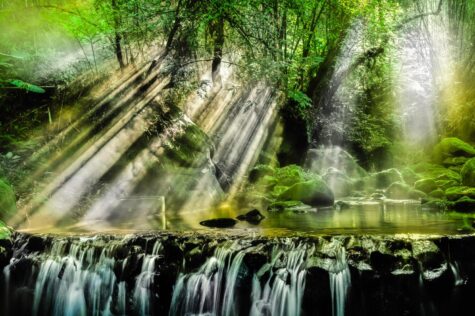Fear factor: how horror attractions make you afraid
October 31, 2017
Popular horror attractions might not be as scary as they seem.
As Halloween draws near, many people go to horror attractions. This spooky form of entertainment uses science to induce fear by triggering the human fight or flight reflex through sight, sound, and smell.

Visually, fear stems from potentially harmful stimuli. According to Asian Scientist, visual stimuli is processed by the brain to determine if it is harmful or not. If the stimuli is determined to be harmful, the fight or flight reflex, part of the sympathetic nervous system that prepares someone to defend themselves or flee from a situation, is triggered.
This releases adrenaline and norepinephrine which trigger immediate physical reactions. According to Psychologist World, these reactions are increased heart rate and breathing as well as constricting muscles and blood vessels. These reactions prepare the body to run away or fight the dangerous stimuli.
But there is a difference between seeing dangerous stimuli, such as in a horror film, versus actually believing there are dangerous stimuli. Generally, horror movies and attractions will have a lot of jump scares which elicit the fight or flight reflex. However, according to Mind of Steel, although these scare release adrenaline, because there is no real threat, the adrenaline will be expelled quickly.
In order to cause a lasting sense of fear, movies and attractions employ other elements to produce feelings of anxiety. One of these elements sound, often in the form of artificial sound effects. According to Britannica, these effects are used to complement what someone is seeing and make is seem more realistic.
A major aspect of jump scares are the corresponding sounds. In an article on Inverse, Christian Grillon, a psychophysiologist who studies fear and anxiety at the National Institute of Mental Health, says that short, loud sound effects are the best for jumpscares. This is because “the impact of a startling stimulus depends on two physical characteristics: its intensity as well as its so-called rise time, or how sudden and powerful the stimulus is.”
So loud sudden noises scare people, what about the creepy background music? According to UCLA evolutionary biologist Daniel Blumstein, nonlinear noises, sound waves are often distorted as they travel due to the speed of vibration, stimulate the most negative emotional response. This type of sound wave is often used in the creepy music of horror movie and attractions.
Another sound that evokes fear is called infrasound. According to the Guardian, this is sound below human hearing, any sound below 20hz. It is able to cause “discomfort, dizziness, blurred vision (by vibrating your eyeballs), hyperventilation and fear, possibly leading to panic attacks.” According to the Atlas Obscura, sound waves as low as 12hz are used to freak people out in horror movies and attractions.
Just as certain sounds can induce fear and anxiety, certain smells can induce a similar response. According to IO9, sweat, noxious fumes, and carbogen all have this ability.
A study funded by the US Defence Advanced Research Projects Agency, the Pentagon’s military research wing, found that inhaling fear-sweat elevated heart rate as well as activity in the parts of the brain associated with fear responses.
Similar to smelling fear-sweat, noxious smells can often lead to fear. According to Wired, when a meteor released a non lethal gas that smelled like sulfur, an element that has a scent resembling rotten eggs, over 600 people became ill.
As the story spread, people began becoming ill after seeing someone who had been affected by the smell. Similar cases throughout the years had had similar results. When people interpreted an innocuous smell as harmful, mass hysteria would break out with more people falling ill than had originally smelt the scent.
Noxious smells are often used in fear attractions. According to CNN, fear attractions use scents such as rotting decay or slaughter house to turn stomachs and incite fear. Even Disney and Universal are in on the action using nice scents for everyday, but for Halloween scents like sewage and bodily function are used to terrify guests, according to the Orlando Sentinel.
Scent, sound, and sight, halloween attractions induce fear in many ways. But knowing the science, maybe you can be the scarer this year.


